SolarCity sees bright, clean future in Las Vegas
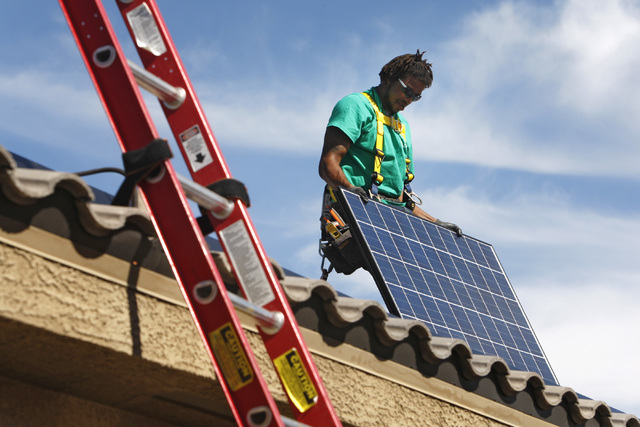
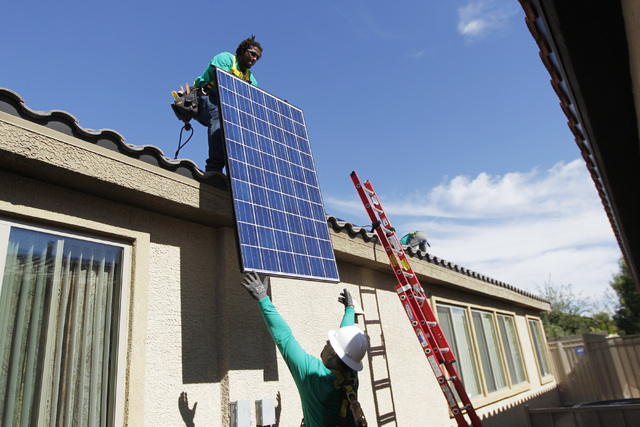
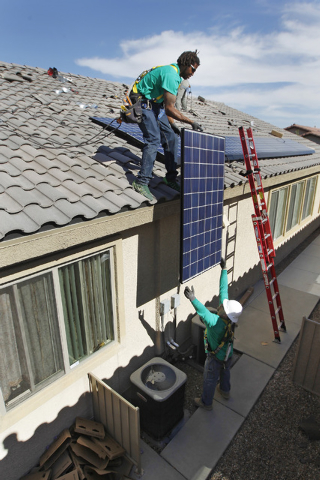
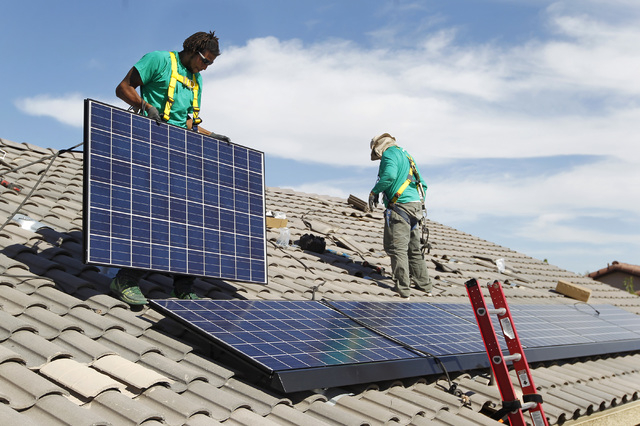
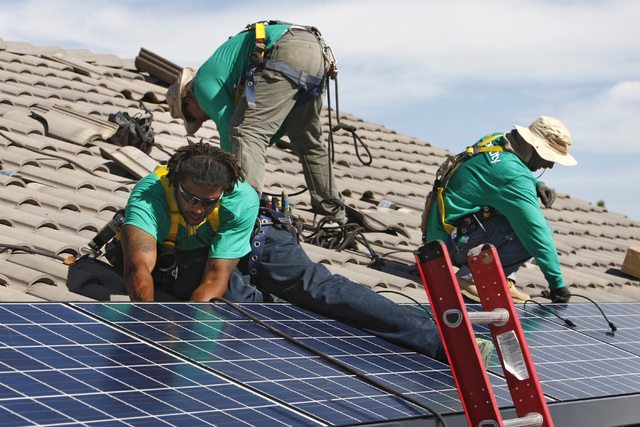
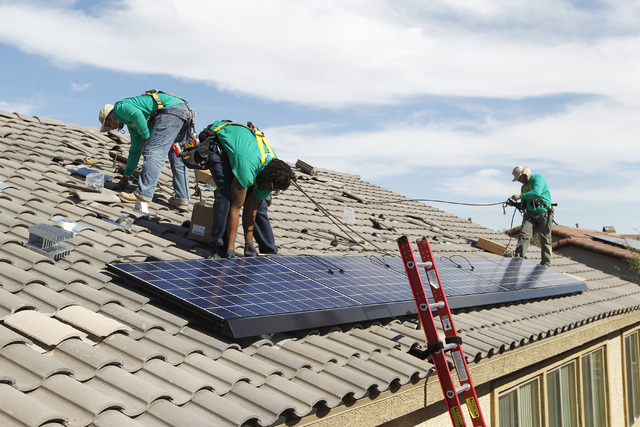
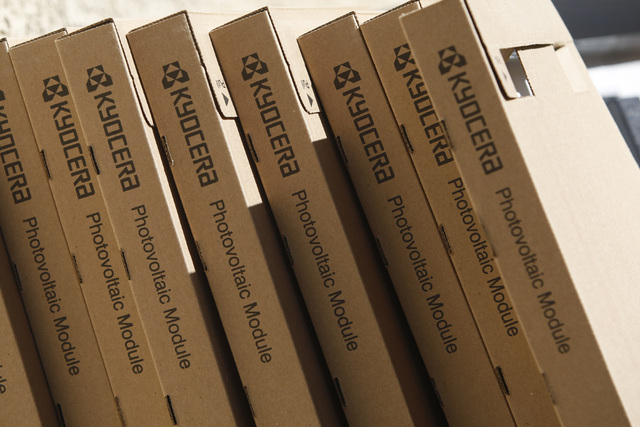
Last year, SolarCity founders, brothers Lyndon and Peter Rive, wanted to establish their San Mateo, Calif.-based company in Nevada. However, they felt state policies didn’t accommodate solar. They decided to wait for legislative changes.
Instead of sitting idly by, SolarCity set-up a Town Square-based call center in Las Vegas in 2013 to handle sales, customer service, accounting and finance for the company.
In February, Senate Bill 123, which resulted in the closure of the Reid Gardner coal power plant and required 350 megawatts to be created from renewable energy and Assembly Bill 428, which called for renewable energy laws to be revised, propelled SolarCity’s move to the Silver State.
In March, the governor’s economic development office granted SolarCity $1.2 million from its $10 million Catalyst Fund, which helps job-creating companies expand or move to Nevada. In turn, SolarCity promised to create at least 200 jobs in Southern Nevada.
By May, SolarCity opened up an 18,000-square-foot operations center in Henderson and has since employed more than 900 at its Town Square and Henderson locations.
“We blew it out of the water, and I feel good delivering our promise,” said younger brother Lyndon Rive, founder and CEO. “Las Vegas was hit hard by the recession, specifically in the housing market, and we’ve picked up many of those construction workers and redeployed them into installing solar. It feels really good.”
Scott Muelrath, executive director of the Henderson Chamber of Commerce, said SolarCity is aggressively ramping up operations.
“They have exceeded their hiring expectations,” he said. “Obviously the beneficial economic impact to Henderson and Southern Nevada as a result of this growth is only positive and helps fuel the growth rate in our community currently underway.”
The company, which operates in 13 states and employs more than 6,000 people, was founded in 2006 in an effort to deliver clean, affordable energy.
“The largest air pollute is the utility industry, the largest water pollute is the utility industry and one of the largest water consumers is the utility industry,” Rive said. “People are paying more for dirty power, and if we want to see a change we have to sell clean energy for less.”
Nevada is one of the best places to install solar energy, according to Rive.
“There’s lots of sun here, and there was a policy change to accommodate solar,” Rive said. “Residents also like to control their energy costs.”
Mineral County School District, about 300 miles northwest of Las Vegas in Hawthorne, had three solar power covered parking structures installed in June by SolarCity.
“We’re always looking for means to save dollars in order to better spend our limited funds on teaching and learning,” Superintendent Chris Schultz said.
Mineral County School District’s solar project totaled $750,000, according to Schultz. He added that rebates from NV Energy and the federal government covered nearly the entire cost.
NV Energy Communications Manager Jennifer Schuricht said the company has been providing rebates for home and business solar panel installations through its SolarGenerations program for the past 10 years in Southern Nevada. She added 3,184 customers in Southern Nevada have installed solar.
More than 2,000 of those Southern Nevada customers have installed solar energy through SolarCity, Rive said.
“Right now, we’re primarily residential because commercial development takes a little longer, but we think they’ll be more commotion in about six months,” Lyndon said. “It takes at least 12 months to see volume on commercial projects, but there is a large demand.”
Rive attributes SolarCity’s success in Las Vegas to its value proposition.
“We sell energy at a lower rate than you can buy from the utility company and our energy doesn’t hurt the planet,” Rive said. “If you could pay more for dirty energy or less for clean energy, which one would you go for?”
The future of Solar City is to expand.
“We want to expand further into the states we currently operate in to provide cheaper cleaner energy,” Rive said. “We’ve doubled every year for the last eight years and if we can do that same for the next four or five years that would be great.”
Here in Nevada, Rive said he hopes to add even more jobs.
“We plan to expand our warehouse and add additional support,” Rive said. “The local community has been very receptive and we want to continue to expand in Nevada.”
Building codes are being revamped
Nevada’s building codes are about to get another green face-lift.
New commercial and residential buildings will have to comply with the 2012 International Energy Conservation Code by July 1. Commercial codes will be separate from residential, with each having its own reference standards and provisions. However, the code allows commercial building owners to follow alternative federal standards.
On the commercial side, a provision for existing buildings was added. If owners of a commercial building want to make additions, alterations or repairs, the 2012 international code standards have to be complied with. Following the standard set of alternative federal guidelines is also an option.
Commercial buildings are also required to comply with one of three mandates to install an efficient heating, ventilation and air conditioning, lighting or renewable energy system. Other areas of commercial compliance include solar reflectance installed on certain roofs — which only applies to parts of Southern Nevada. Many parts of the 2012 standards have this type of stipulation because the codes are built with the understanding that each climate is different.
Residential building codes are only allowed to follow the international regulations. Some parts are mandatory. But there are alternative paths inside the code to follow.
One of the residential code changes increases the high-efficiency lighting requirement from 50 percent to 75 percent. Other requirements include taking into account the visible transmission rates of windows, increased insulation on pipes exposed to the outside and conducting tests that weren’t previously required.
Under Nevada statutes, these building codes are updated every three years. The 2009 international code standards took effect on July 1, 2012.
— Jeffrey Meehan












